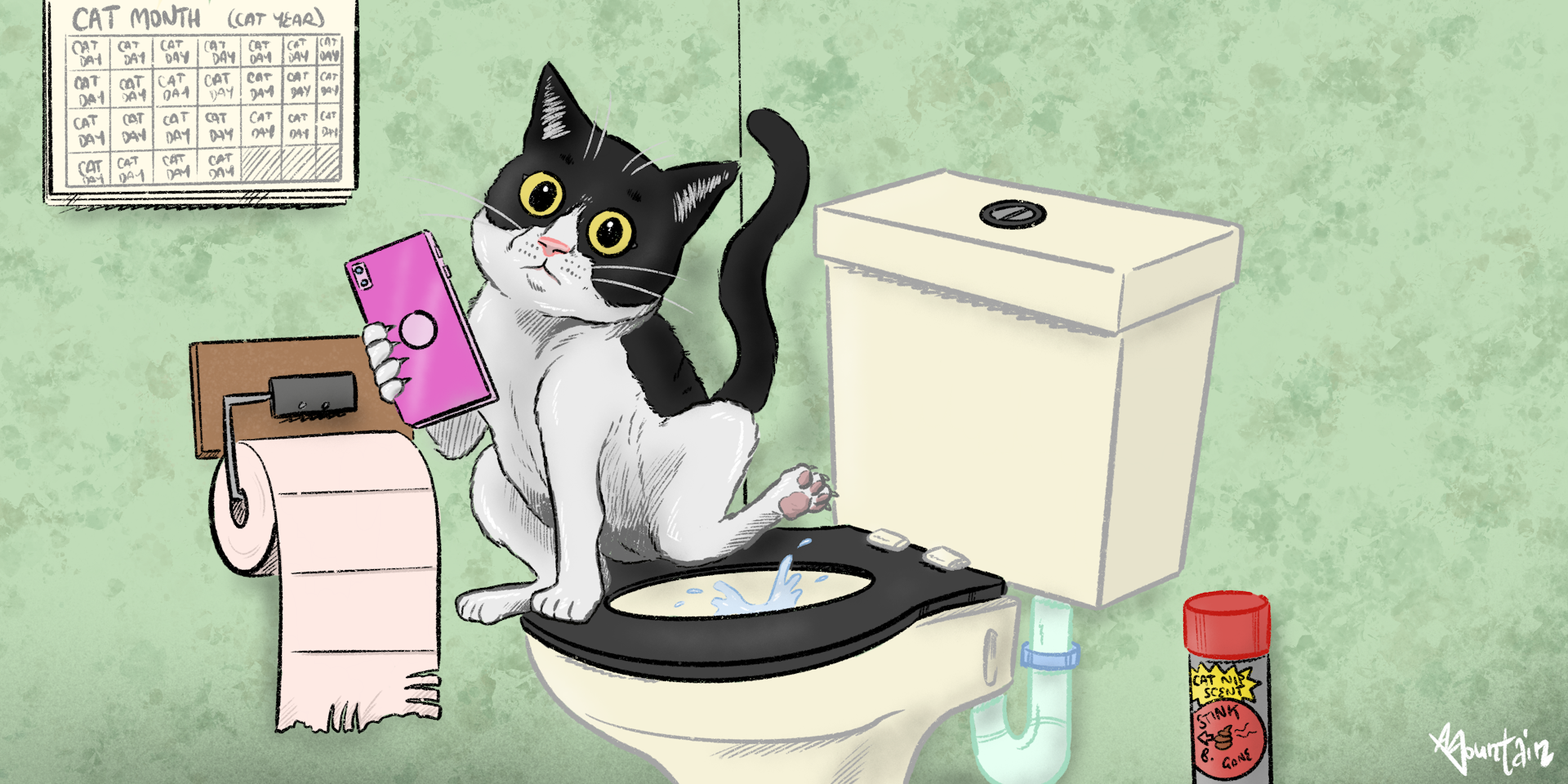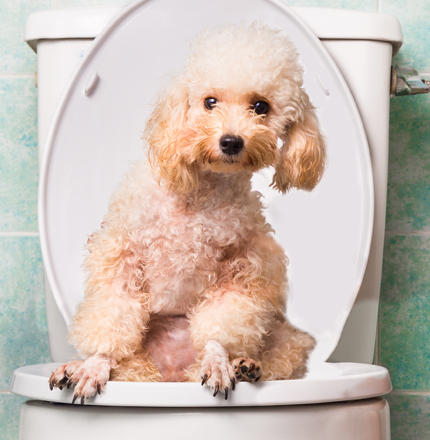This article listed below about Why you should never flush dog poop down the toilet is extremely attention-grabbing. Give it a go and draw your own results.

When it concerns getting rid of waste, specifically animal waste, many individuals often resort to the practical choice of flushing it down the bathroom. Nonetheless, this seemingly easy solution can have serious repercussions for the atmosphere and public health. In this write-up, we'll discover why flushing pet waste down the commode is a negative concept and provide alternate techniques for proper disposal.
Intro
Correct garbage disposal is critical for preserving ecological sustainability and public health. While it may appear harmless to purge animal waste down the toilet, it can cause different issues, both for the setting and human health.
Threats of flushing animal waste
Ecological effect
Flushing pet waste introduces damaging germs and pathogens right into rivers, which can adversely impact marine ecosystems. These pathogens can pollute water sources and damage aquatic life, interrupting delicate ecosystems.
Public health issues
Pet waste includes harmful microorganisms such as E. coli and Salmonella, which can pose serious health and wellness risks to human beings. Purging pet waste down the commode can pollute water products, bring about the spread of conditions and infections.
Alternatives to flushing
Rather than purging pet waste down the bathroom, there are several alternative disposal approaches that are extra eco-friendly and hygienic.
Composting
Composting pet waste is an eco-friendly means to take care of it. By composting, raw material is broken down into nutrient-rich dirt, which can be used to feed yards and plants.
Garbage dump disposal
Disposing of pet waste in a garbage dump is an additional alternative. While not as eco-friendly as composting, it is a safer alternative to flushing, as it prevents the contamination of water sources.
Pet dog garbage disposal systems
There are specialized pet dog waste disposal systems available that safely and hygienically deal with pet waste. These systems often use enzymes to break down waste and remove odors.
Steps to correct pet waste disposal
To make sure appropriate disposal of pet waste, adhere to these steps:
Scooping and landing waste
Regularly scoop and bag pet waste making use of eco-friendly bags. This prevents waste from infecting the environment.
Making use of assigned waste bins
Dispose of bagged animal waste in assigned waste containers, such as garden compost containers or landfill bins. Prevent flushing it down the commode in any way prices.
Cleaning litter boxes and family pet locations consistently
Frequently clean can and pet dog areas to stop the build-up of waste and germs. Usage pet-safe cleaning products to preserve health.
Advantages of appropriate disposal methods
Adopting proper disposal techniques for pet waste supplies several benefits:
Decreased environmental pollution
Proper disposal techniques minimize the danger of environmental pollution, shielding rivers and ecological communities from contamination
Reduced threat of water contamination.
By preventing flushing pet waste down the commode, the risk of water contamination is dramatically lowered, protecting public health.
Boosted sanitation and hygiene
Correct disposal approaches advertise far better cleanliness and health, producing a safer setting for both humans and animals.
Verdict
To conclude, purging animal waste down the toilet is harmful to the atmosphere and public health. By adopting alternative disposal techniques and adhering to appropriate waste administration techniques, we can decrease the unfavorable effect of pet waste and add to a cleaner, much healthier earth.
What To Do With Dog Poo – The Do's And Don'ts Of Disposing Of Faeces
Dog poo bins
Some councils provide dedicated dog waste bins in popular dog-walking areas that can take dog poo that has been bagged but you can legally dispose of dog waste in any public litter bin, as long as it is securely bagged. This also applies to your wheelie bin at home.
Do not flush
Water companies do not recommend flushing dog faeces down the toilet because certain parasites can survive the water processing treatment and are potentially harmful to humans. You should also never consider flushing dog poo that has been bagged down the toilet as the bags will not break down and instead create severe blockages in the sewage system.
In the woods
The Forestry Commission promotes a ‘stick and flick’ method for dealing with waste in the woods. This means finding a stick and using it to flick any poo from off the path so that it is out of the way of other walkers. You could also bury it as long as it is not in an area where there might be livestock.
Livestock
Parasites found in dog poo can be transmitted to livestock if they inadvertently eat infected faeces that has been left on grazing land. This could result in the death of sheep or abortion in cattle so you should always make sure you pick up your dog’s waste in fields where livestock could be present.

Frequently clean can and pet dog areas to stop the build-up of waste and germs. Usage pet-safe cleaning products to preserve health.
Advantages of appropriate disposal methods
Adopting proper disposal techniques for pet waste supplies several benefits:
Decreased environmental pollution
Proper disposal techniques minimize the danger of environmental pollution, shielding rivers and ecological communities from contamination
Reduced threat of water contamination.
By preventing flushing pet waste down the commode, the risk of water contamination is dramatically lowered, protecting public health.
Boosted sanitation and hygiene
Correct disposal approaches advertise far better cleanliness and health, producing a safer setting for both humans and animals.
Verdict
To conclude, purging animal waste down the toilet is harmful to the atmosphere and public health. By adopting alternative disposal techniques and adhering to appropriate waste administration techniques, we can decrease the unfavorable effect of pet waste and add to a cleaner, much healthier earth.
What To Do With Dog Poo – The Do's And Don'ts Of Disposing Of Faeces
Dog poo bins
Some councils provide dedicated dog waste bins in popular dog-walking areas that can take dog poo that has been bagged but you can legally dispose of dog waste in any public litter bin, as long as it is securely bagged. This also applies to your wheelie bin at home.
Do not flush
Water companies do not recommend flushing dog faeces down the toilet because certain parasites can survive the water processing treatment and are potentially harmful to humans. You should also never consider flushing dog poo that has been bagged down the toilet as the bags will not break down and instead create severe blockages in the sewage system.
In the woods
The Forestry Commission promotes a ‘stick and flick’ method for dealing with waste in the woods. This means finding a stick and using it to flick any poo from off the path so that it is out of the way of other walkers. You could also bury it as long as it is not in an area where there might be livestock.
Livestock
Parasites found in dog poo can be transmitted to livestock if they inadvertently eat infected faeces that has been left on grazing land. This could result in the death of sheep or abortion in cattle so you should always make sure you pick up your dog’s waste in fields where livestock could be present.

As an enthusiastic reader about 4 Reasons Why Dog Poop Cleanup is Important, I assumed sharing that piece of content was worthwhile. Make sure you take the time to promote this blog entry if you enjoyed it. I love reading our article about .
Click Here